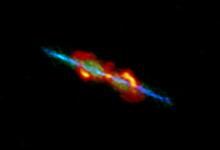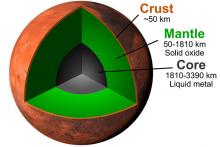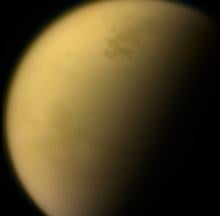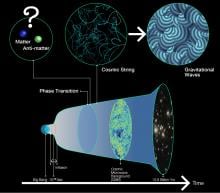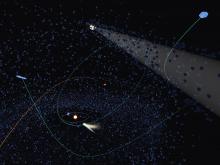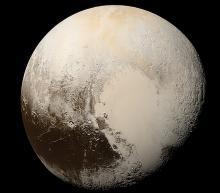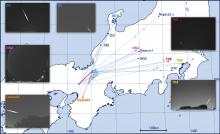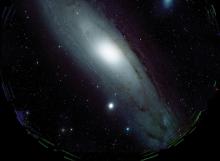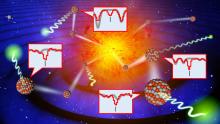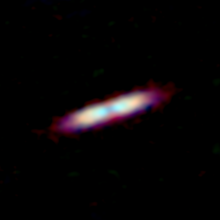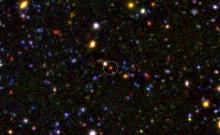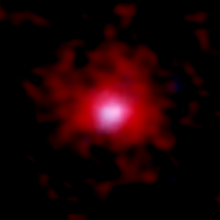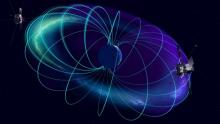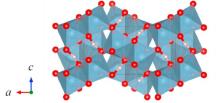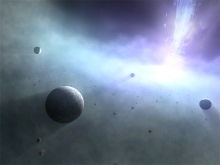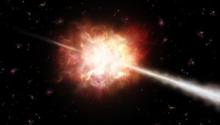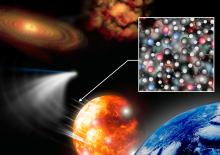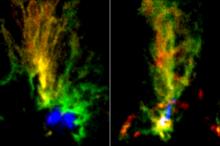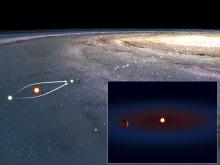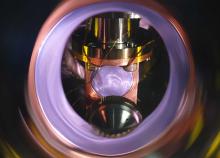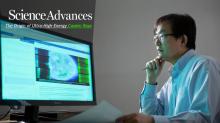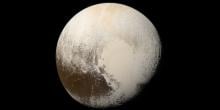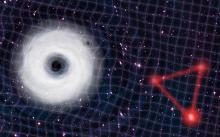Space
News
25 Feb 2020
Mayor Cheol-ho Song (Ulsan, South Korea) visited the startup facilities of Ulsan National Institute of Science and Technology (UNIST) on January 4, 2020.
20 Feb 2020
While InSight's seismometer has been patiently waiting for the next big marsquake to illuminate its interior and define its crust-mantle-core structure, two scientists, Takashi Yoshizaki and Bill McDonough have built a new compositional model for Mars. They used rocks from Mars and measurements from orbiting satellites to predict the depth to its core-mantle boundary, some 1,800 km beneath the surface and have been able to suggest that its core contains moderate amounts of sulfur, oxygen and hydrogen as light elements.
14 Feb 2020
Planetary scientists using ALMA revealed the secrets of the atmosphere of Titan, the largest moon of Saturn.
05 Feb 2020
The origin of how the Universe created its voids and filaments can now be studied within seconds after researchers developed an artificial intelligence tool called Dark Emulator.
03 Feb 2020
Gravitational waves could contain evidence to prove that neutrino particles reshuffled matter and anti-matter, explains a new study.
24 Jan 2020
Silly questions lead to surprising answers about the fundamental nature of the universe. We might have been getting it wrong this whole time.
17 Jan 2020
Astronomers at the National Astronomical Observatory of Japan have analyzed the paths of two objects heading out of the Solar System and determined that they likely originated from outside of the Solar System.
15 Jan 2020
A gassy insulating layer beneath the icy surfaces of distant celestial objects could mean there are more oceans in the universe than previously thought.
15 Jan 2020
Astronomers uncovered the true identity of the fireball spotted on April 29, 2017.
09 Jan 2020
Searching for tiny, ancient black holes proposed by Stephen Hawking to see if they might be dark matter.
09 Jan 2020
Astronomers have cataloged signs of 9 heavy metals in the infrared light from supergiant and giant stars.
23 Dec 2019
Astronomers using the Atacama Large Millimeter/submillimeter Array (ALMA) found a young star surrounded by an astonishing mass of gas.
19 Dec 2019
A distant galaxy more massive than our Milky Way has revealed that the 'cores' of massive galaxies in the Universe had formed already 1.5 billion years after the Big Bang.
16 Dec 2019
Researchers have discovered gigantic clouds of gaseous carbon more than a radius of 30,000 light-years around young galaxies using ALMA.
13 Dec 2019
JAXA and NASA satellite observations show where killer electrons are generated in the Van Allen radiation belts surrounding Earth.
10 Dec 2019
A new hydrous phase, ε-AlOOH, was observed to be stable at pressures above ~200 GPa. The stability of ε-AlOOH at extremely high pressures may affect the modelling results of the internal structure and deep water circulation of some extra-solar planets, such as terrestrial super-Earths, because the hydroxide may store water in these regions.
25 Nov 2019
Theoreticians in two different fields defied the common knowledge that planets orbit stars like the Sun. They proposed the possibility of thousands of planets around a supermassive black hole.
20 Nov 2019
An international team of researchers have observed a gamma-ray burst, an extremely energetic flash following a cosmological cataclysm, emitting very-high-energy gamma-rays long after the initial explosion.
19 Nov 2019
Using the Cooled Mid-Infrared Camera and Spectrometer on the Subaru Telescope, astronomers have detected an unidentified infrared emission band from comet 21P/Giacobini-Zinner in addition to the thermal emissions from silicate and carbon grains.
14 Nov 2019
Two peacock-shaped gaseous clouds were revealed in the Large Magellanic Cloud by observations with Atacama Large Millimeter/submillimeter Array.
01 Nov 2019
Researchers using telescopes around the world confirmed and characterized an exoplanet orbiting a nearby star through gravitational microlensing.
27 Sep 2019
An experiment shows that one of the basic units of life — nucleobases — could have originated within giant gas clouds interspersed between the stars.
28 Aug 2019
An international team has used AI to create a 3D simulation of the Universe.
27 Aug 2019
Chair Professor Il Soon Hwang, who joined the School of Mechanical Aerospace and Nuclear Engineering at South Korea's Ulsan National Institute of Science and Technology (UNIST), has been selected to lead the 'Nuclear Convergence Technology Development' project by the Ministry of Science and ICT (MSIT) and National Research Foundation (NRF).
26 Aug 2019
A recent study, affiliated with South Korea's Ulsan National Institute of Science and Technology (UNIST) has unveiled the dynamics of the bloch point in an asymmetric permalloy disk.
26 Aug 2019
A recent study, affiliated with South Korea's Ulsan National Institute of Science and Technology (UNIST) has laid a solid foundation for further study of dispersive interaction by verifiying a new mechanism for matter-wave diffraction.
26 Aug 2019
A recent study, affiliated with South Korea's Ulsan National Institute of Science and Technology (UNIST) has shed new light on the mysterious origin of such ultra-high-energy cosmic rays (UHECRs) that has puzzled astrophysicists for decades.
20 May 2019
A gassy insulating layer beneath the icy surfaces of distant celestial objects could mean there are more oceans in the universe than previously thought.
26 Apr 2019
An international team of researchers has discovered a novel method that might verify the existence of a new hypothetical type of particle, namely ultralight bosons, by using observation of the gravitational waves emitted by a smaller black hole orbiting a larger black hole.
Events
Sorry, no events coming up for this topic.
Researchers
Sorry, no researchers coming up for this topic.
Giants in history
Chinese electron microscopy specialist Li Fanghua (6 January 1932 – 24 January 2020) facilitated the high-resolution imaging of crystal structures by eliminating interference.
Haisako Koyama (1916 – 1997) was a Japanese solar observer whose dedication to recording sunspots – cooler parts of the sun’s surface that appear dark – produced a sunspot record of historic importance.
Angelita Castro Kelly (1942-2015) was the first female Mission Operations Manager (MOM) of NASA. She spearheaded and supervised the Earth Observing System missions during its developmental stage.
Malaysia’s first astrophysicist, Mazlan binti Othman (born 11 December 1951) was instrumental in launching the country’s first microsatellite, and in sending Malaysia’s first astronaut, Sheikh Muszaphar Shukor, into space.
Meghnad Saha (6 October 1893 – 16 February 1956) was an Indian astrophysicist best known for formulating the Saha ionization equation which describes the chemical and physical properties of stars.
Subrahmanyan Chandrasekhar (19 October 1910 – 21 August 1995) was an Indian astrophysicist who studied the structure and evolution of stars.
Abdus Suttar Khan (c. 1941 – 31 January 2008) was a Bangladeshi engineer who spent a significant part of his career conducting aerospace research with NASA, United Technology and Alstom.
Bibha Chowdhuri (1913 – 2 June 1991) was an Indian physicist who researched on particle physics and cosmic rays. In 1936, she was the only female to complete a M.Sc. degree at the University of Calcutta.


